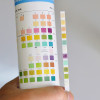
 IJCP Editorial Team
IJCP Editorial Team
Point-of-Care Ultrasound for Assessing Fluid Responsiveness in Children with Shock
Children with septic shock often exhibit fluid deficit, reduced vascular tone, and myocardial dysfunction, necessitating fluid resuscitation and vasoactive agents. However, indiscriminate fluid boluses may not consistently improve cardiac output and can lead to adverse effects, such as worsened cardiac function, endothelial glycocalyx injury, arterial vasodilatation, increased need for mechanical ventilation, and higher mortality rates.
Thus, it is crucial to administer fluid boluses only to fluid-responsive and tolerant patients, although the ideal method for determining fluid responsiveness remains uncertain. Point-of-care ultrasound (POCUS) is increasingly employed in pediatric intensive care due to its real-time nature, ease of use, short learning curve, and absence of radiation risk.
A study by Banothu et al. aimed to determine the utility of POCUS in assessing fluid responsiveness in children with shock. This study included 37 mechanically ventilated children with shock and measured various parameters before and after a fluid bolus – to assess fluid responsiveness.
Among the children enrolled, 62% were fluid responsive, with the distensibility index of the inferior vena cava (ΔIVC) and respiratory variation in peak aortic blood flow velocity (∆Vpeak) proving to be good predictors. Fluid responders exhibited higher ΔIVC and ∆Vpeak compared to non-responders. The study determined optimal cutoff values for ΔIVC and ∆Vpeak to predict fluid responsiveness as 23% and 11.3%, respectively.
While the findings demonstrate the effectiveness of ΔIVC and ∆Vpeak in predicting fluid responsiveness, certain challenges remain – determining universal cutoff values and accounting for confounding factors affecting measurements. Factors like operator skills, cardiac function, intrathoracic pressure, intra-abdominal hypertension, tidal volume, rhythm abnormalities, and measurement timing need consideration. The role of IVC variability in spontaneously breathing or pressure-support-mode ventilated children requires further evaluation.
Given the potential harm of excess fluid boluses, a comprehensive approach incorporating clinical details, hemodynamic parameters, and POCUS findings may assist clinicians in making informed decisions about administering fluid boluses to children with shock.
Source: Charaya S, Angurana SK. Indian Journal of Pediatrics. 2023
Nov;90(11):1065-6.

IJCP Editorial Team
Comprising seasoned professionals and experts from the medical field, the IJCP editorial team is dedicated to delivering timely and accurate content and thriving to provide attention-grabbing information for the readers. What sets them apart are their diverse expertise, spanning academia, research, and clinical practice, and their dedication to upholding the highest standards of quality and integrity. With a wealth of experience and a commitment to excellence, the IJCP editorial team strives to provide valuable perspectives, the latest trends, and in-depth analyses across various medical domains, all in a way that keeps you interested and engaged.












Please login to comment on this article